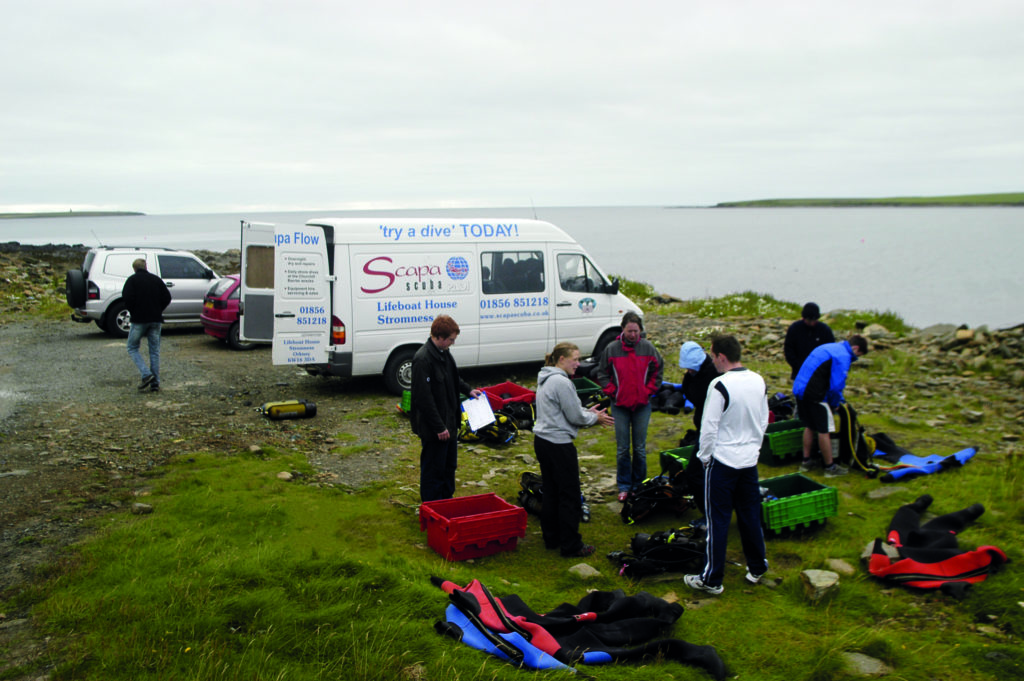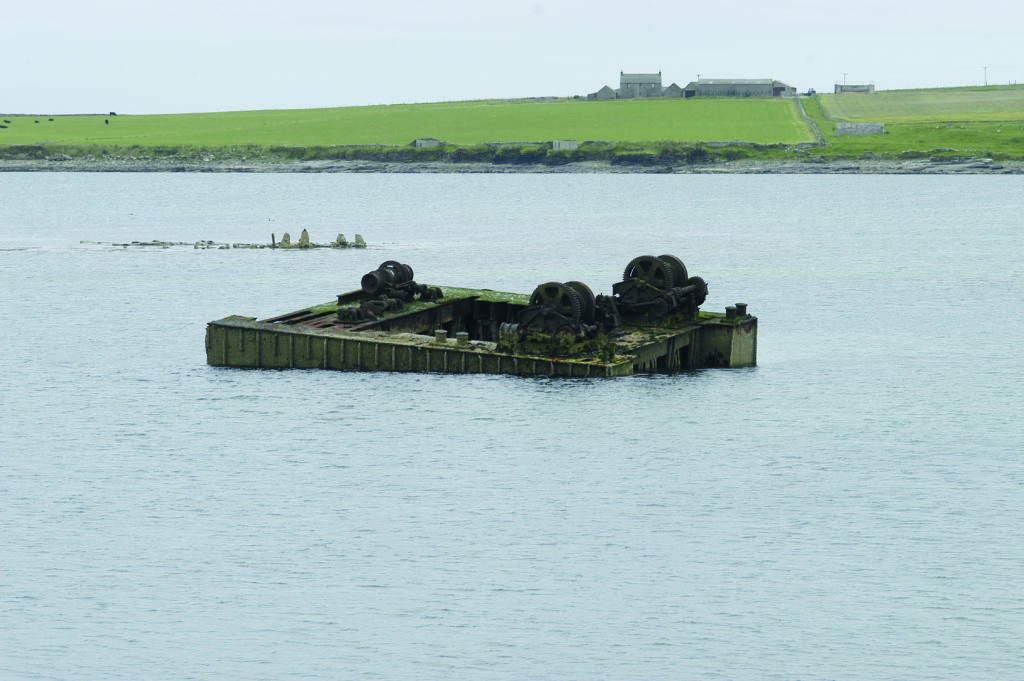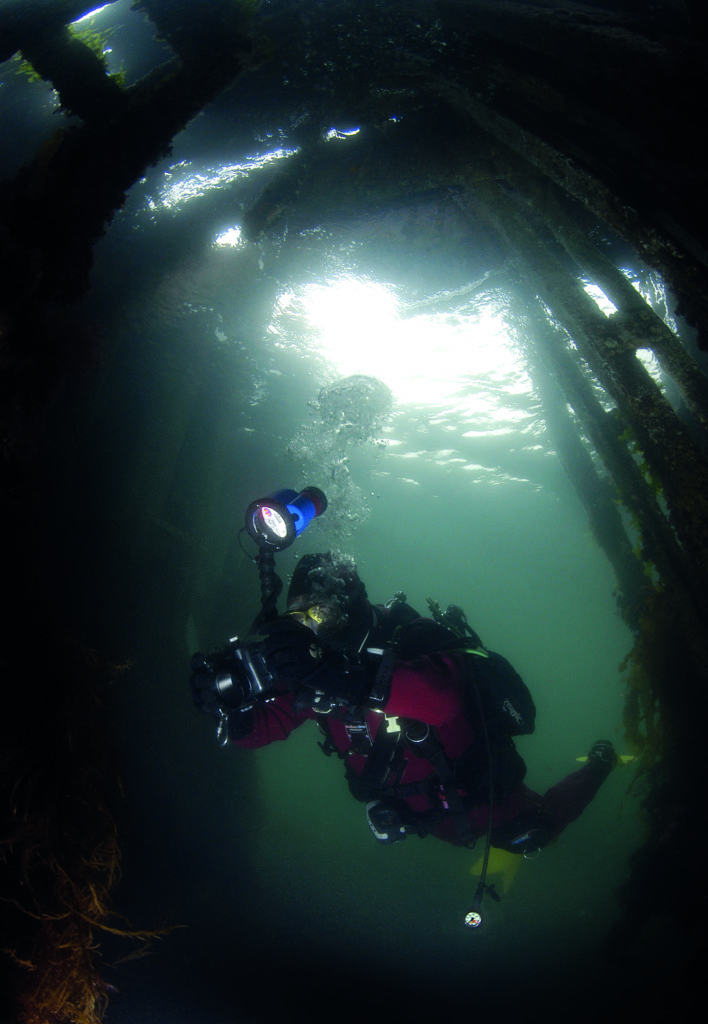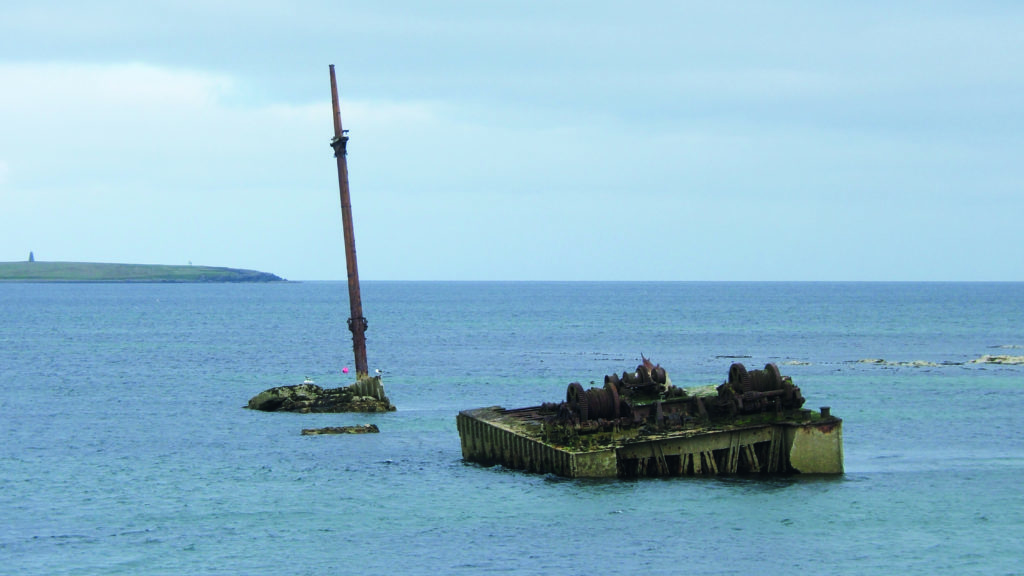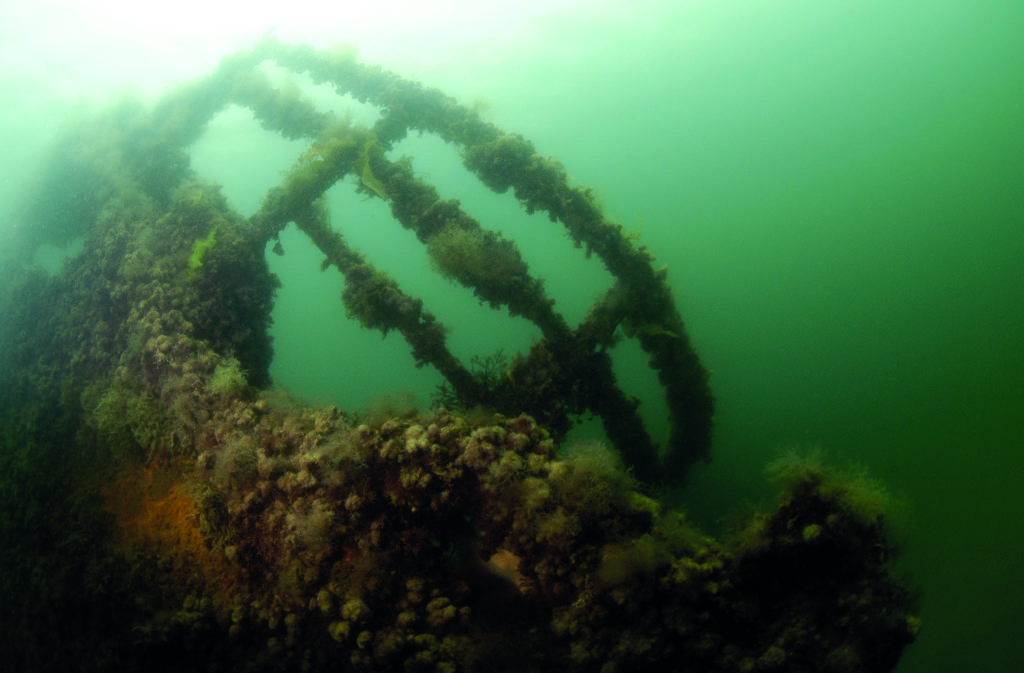Exploring Scapa Flow’s shallower attractions, LAWSON WOOD showcases the Churchill Barrier II. It’s probably the most shipwrecks you can visit on a single UK dive!
When war broke out on 4 August, 1914, Admiral Sir John Jellicoe quickly recognised the vulnerability of the great harbour at Scapa Flow. He was now in command of more than 100 ships, and while Scapa was the best naval base available, it presented security problems.
Also read: Divers’ new imagery lights up Scapa warships
Jellicoe increased the coastal defences with anti-submarine netting, indicator loops and listening devices. He also implemented plans for sinking derelict shipping to block the entrances to the five vulnerable sounds to the eastern and western approaches.
Over the firsts two years of World War One, 23 ships were sunk in the five sounds: Kirk (also known as Holm Sound); Skerry; East Weddell; Water and Burra. This type of blockship protection proved extremely successful in the short term, but the inevitable deterioration of the Scapa Flow blockships led to inspections and analysis having to be carried out on each sunken ship.
Over the two world wars, 11 vessels were sunk as Scapa Flow blockships in Skerry Sound to stop enemy intrusion into the home of the Royal Navy. There were originally thought to be 12 wrecks but it appears that the identification process was fairly haphazard, particularly with the lack of obvious nameplates or identifying signs, bad spelling and poor contemporary recording.
It has taken a huge amount of time to glean the correct information through studying naval photographs and documents; contemporary Admiralty sketches and chart data; Ordnance Survey maps; photographs and other aerial resources; Orkney Library archives, newspapers and the National Archives.
All of this was further confounded by the construction of the Churchill Barriers. To assist in this, most of the existing ships were salvaged extensively, sometimes leaving their positions misnamed and wrong dates sunk and weights given. Several ships were lost directly beneath the new barriers, while others were swept out to sea and some simply disappeared forever.
With the help of Kevin Heath, we have now confirmed and cleared up some of the confusion over certain of the blockships in Skerry Sound to the east of Churchill Barrier II.
The wreck we assumed was the Cape Ortegal should now be recognised as the Almeria, because the remains on the seabed only show two boilers. The Cape Ortegal had three boilers, and it looks entirely possible that the ship was sunk into the deepest part of the channel in Skerry Sound, similar to the fate of the Minieh to the west of Barrier I.
As yet we have discovered no evidence or records of the Cape Ortegal being scrapped for salvage, so we can only assume that it now lies directly beneath Churchill Barrier II. All deeper parts to the east have infilled with sand and sediment.
The WW1 blockships are the Almeria; Argyll; Elton; Reinfeld; Rosewood and Teeswood. Those sunk in WW2 are the Lycia; Cape Ortegal; Emerald Wings; Floating Crane (FC) Pontoon and the Ilsenstein.
The wrecks, or wreck parts, still diveable at Barrier II are the Almeria; Ilsenstein; Lycia; Emerald Wings and the (FC) Pontoon. A small portion of the Teeswood can be seen but it’s not worth spending time on, and while the Argyll’s single boiler can also be found, that’s all there is and it’s not worth the effort or extra swim-time.
The best of the bunch by far is the FC Pontoon. This huge square structure is completely open and topped with kelp. In the centre is a massive boiler with various valves still attached. This wreckage is clearly visible at all states of tide and is very obvious as you cross the barrier by road.
The dive
We start our shore dive to the north-east side of Barrier II, with the road barrier to your right. The engine-block from the Lycia is very obvious, so you can just start the dive from there and follow the line east to the Ilsenstein. Its bow and bow railings are also very apparent.
You then follow the remains of the steel sub deck towards the Emerald Wings. It’s hatches are open and you can easily get beneath them. It is the mast and foreparts of Emerald Wings that we can also see above the surface.
The Almeria’s propeller is clearly seen next to this section. From there, the route takes you south-west towards the FC Pontoon. If you think you’re getting lost along the way, just come to the surface because it stands well clear of the water. Check your position and submerge once more.
The steel work of the Pontoon is open and allows for shafts of light to pass through to the interior, perfect for framing up other divers in your photos. There are always plenty of fish at this site, and the structure lends itself to a great dive.
The beauty of this sheltered site is that divers of all levels can enjoy it. You can even snorkel the bay, which can give you a better perspective on all of the ships sunk during both world wars.
People on their first open-water dive can enjoy part of the amazing history that permeates every aspect of Scapa Flow, and a great handful of shipwrecks. There are probably more wrecks and wreck parts found in this small area than anywhere else in British waters.
THE CHURCHILL BARRIERS
Proving how ineffective the blockships were in protecting Scapa Flow, Günther Prien, in command of U-boat U-47, negotiated his way through Kirk Sound in October 1939 and struck two British naval ships, including HMS Royal Oak, which quickly rolled over and sank, taking with her 833 officers and men.
As a direct result of this attack, Winston Churchill visited Orkney and ordered the construction of permanent barriers across the entrances to the four eastern passageways into Scapa Flow. To achieve this goal, more than 1,350 Italian prisoners of war captured in Africa were conscripted and transported to Orkney.
CHURCHILL BARRIER II: SKERRY SOUND
Type of dive: Perfect shoredive with easy access and car parking. It starts at the remains of the Lycia engine block.
Depth: Expect to get around 3m-12m inside the lower section of the Floating Crane.
Marine Life: What To Look Out For: Sea hares (Aplysia punctate) are always found on the wrecks in the summer months; dwarf plumose anemones (Metridium senile);cuckoo and ballan wrasse, sand eels, snakelocks anemones and dead men’s fingers.
Seabed: Silty and can be stirred up around the huge amount of ship’s wreckage dotted around, covered in seaweed and kelp.
Hazards: There is little to snag or trap you on these wrecks but care, as always, should be your priority especially when exploring beneath any of the large bulkheads. There is no current, but can be some swell from the open sea to the east.
Photographs by Lawson Wood

